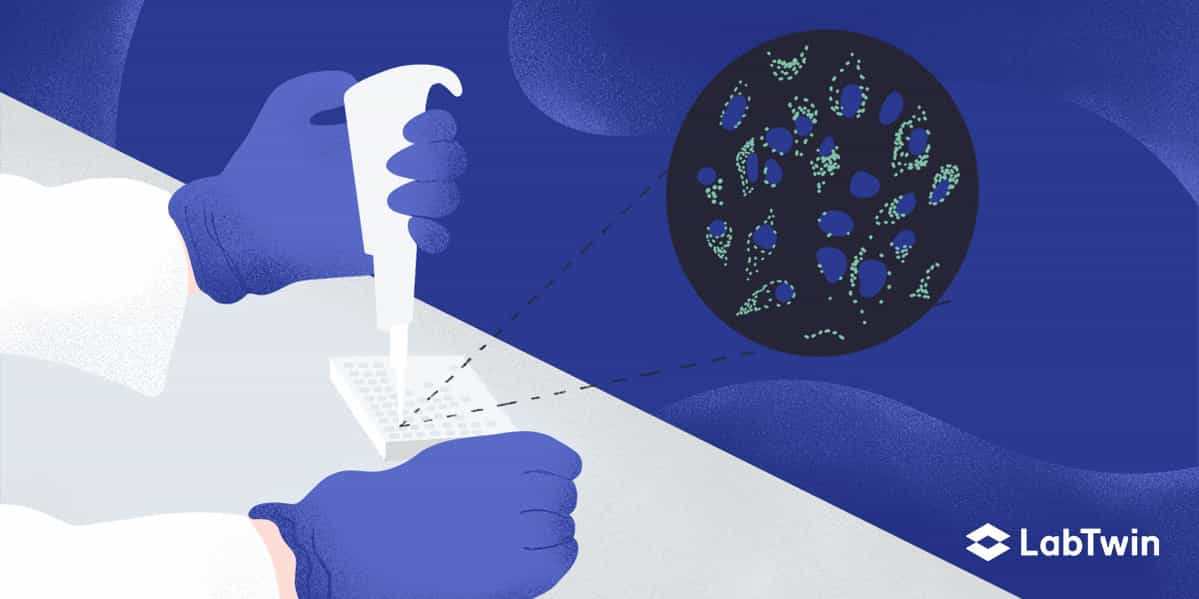Drug discovery and development lead to new treatments for diseases. However, it is a costly, time-consuming and challenging process—developing a marketable drug can take more than 10 years and cost around a billion dollars. One of the reasons for this high cost is that nearly 90% of drugs fail the first phase of clinical trials because of unforeseen drug toxicity or poor efficacy.
Improving early stage in vitro testing, by employing techniques such as high throughput screening in human cells, has become a common goal for pharmaceutical companies. High-Content Screening (HCS) allows scientists to detect drug-induced changes in cell morphology or gene expression. For example, scientists can screen drug candidates for nephrotoxicity in cultured kidney cells or evaluate the impact of different molecules on cultured cancer cells. With high-throughput technologies, hundreds of conditions are tested in parallel, allowing the detection of myriad phenotypic parameters.

Scientists running several assays on specific cell lines with a multitude of drug candidates must collect and handle a large quantity of data over weeks to months. It can be very difficult and time-consuming to manually record real-time data from cell culture experiments.
With LabTwin’s assistance, scientists running cell-based assays estimate saving 4h on their work- flow, as they can record on-the-spot detailed observations or experimental parameters without in- terrupting their work and risking contamination. Scientists report that these real-time digital notes improve data accuracy and are very helpful for subsequent data analysis and troubleshooting.
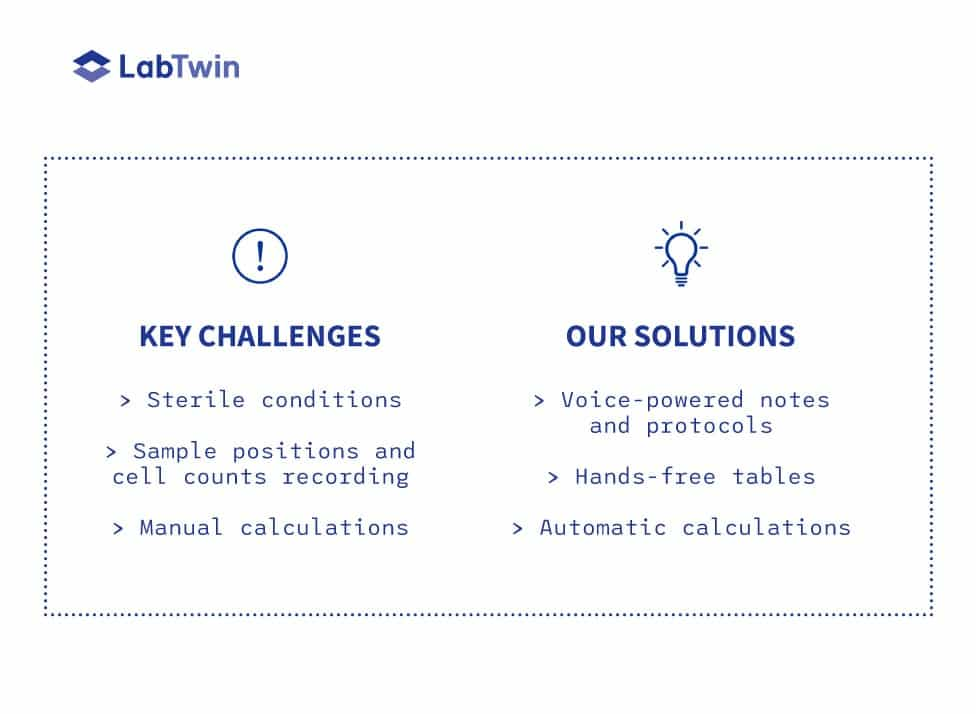
1. PREPARING AN EXPERIMENT
Planning an experiment involves updating and printing several protocols and then carrying these pro- tocols around the lab. Once at the bench, scientists often add notes to protocols during experiments. Paper loss between different workstations, damage from chemical spots, as well as difficulties reading protocols while performing experiments, are daily challenges faced by scientists.
By loading or updating protocols in LabTwin, scientists can access their protocols, simply by using their voice, anywhere and at any time. Scientists can also create a label at the beginning of each workflow. LabTwin will then tag every note taken during this workflow. Then, at the end of the ex- periment, the scientist can easily collect all notes and details by using this label.
Scientists report that LabTwin helps them prepare for experiments by simplifying the process of capturing ideas and adding any missing lab items or reagents to the LabTwin order list.
By integrating with an inventory system, or LIMS, LabTwin enables direct localisation or ordering of the products and consumables.
“LabTwin helps me to capture my ideas in real-
time during the planning phase and gather them in
one place.”
LabTwin User - Scientist, Top 10 Pharma Company Fig.2: Voice-powered ordering of lab items
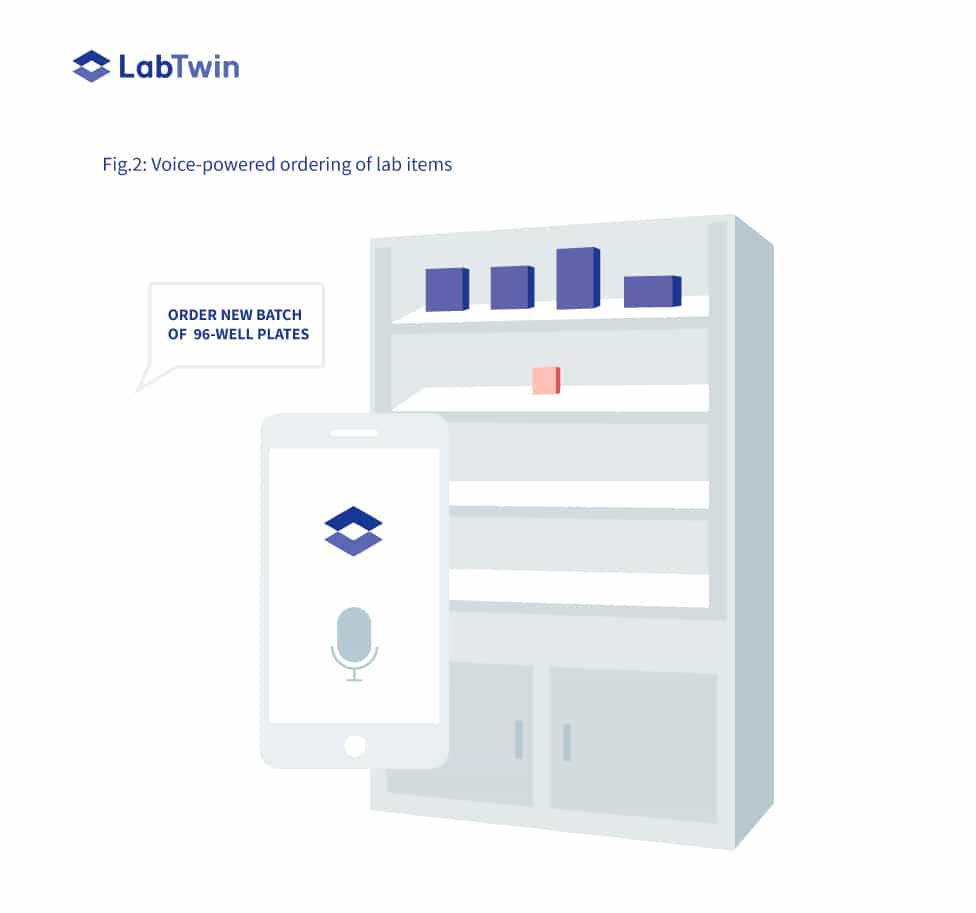
2. CELL CULTURE
Drug candidates are often tested on specific human cell lines cultured on high-density 96- or 384-well plates. Each step in a cell culture protocol must happen in sterile conditions under a fume hood and scientists must wear gloves to avoid contaminating the cultures. These conditions make it difficult for scientists to read protocols or write down observations without interrupting their workflow. Counting cells in each well and diluting them with the correct amount of culture medium to reach the targeted concentration is a classic and critical step in cell culture. Cell counts need to be memorized, then reported on a paper or computer outside of the hood where the dilution calculation is performed. The amount of medium to add is again memorized and pipetted under the hood.
With LabTwin’s voice-powered digital lab assistant, scientists can record all results and experimental conditions, for example, the number of cells in each well, simply by talking. LabTwin then transcribes these results into table format. An automatic calculation can be performed and LabTwin gives back directly the volume of culture medium necessary for the dilution.
Scientists can also use LabTwin to record batch numbers of the culture medium used for this step. Protocol deviations can also easily be reported, in real-time, while they conduct an experiment.
Scientists report that LabTwin helps lower error rates compared with manually recording observations.
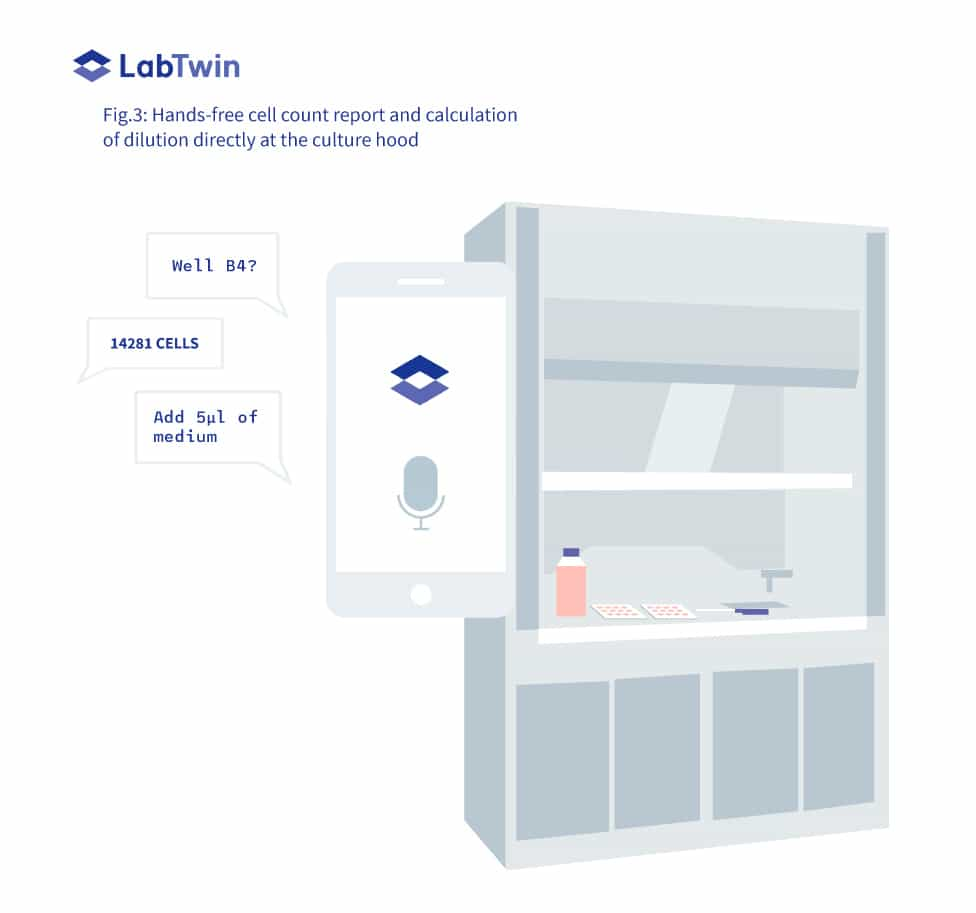
3. TREATMENT
Still under the hood, cell plates are then treated with dozens of different drug candidates that are test- ed in parallel. This step requires scientists to follow a pre-established cell map that is usually printed, carried and edited in the lab. After incubation with added drug/s, scientists must manually examine wells and disregard any with precipitated compounds. Capturing this data is often done on paper or by memory—both methods are prone to human error.
Scientists report that using LabTwin’s digital lab assistant makes it faster and easier to record data during an experiment, in real time, simply by talking.
LabTwin allows scientists to record extensive details and observations during any experiment, for example recording batch numbers, and the position and concentration of compounds and cells, without removing gloves or leaving the hood.
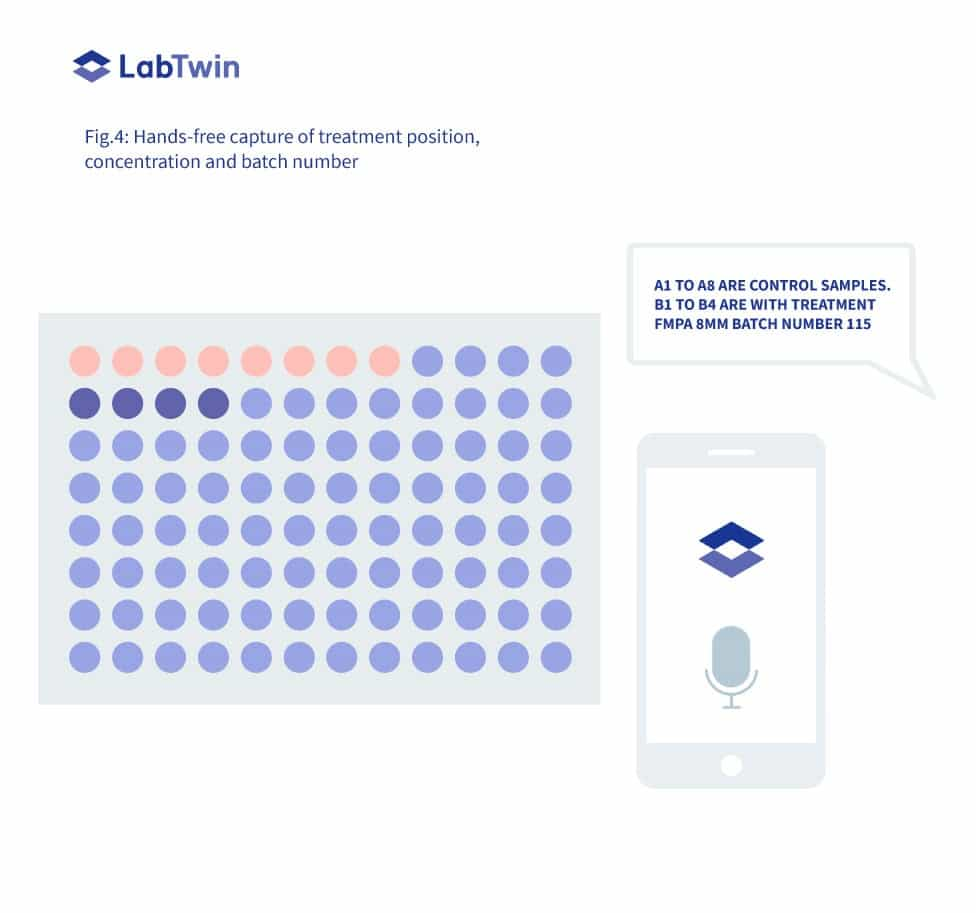
4. CELL IMAGING
Scientists then assess how drug candidates affect cells by recording morphological changes, such as cytoskeletal structure, cell membrane integrity or cell polarity, and functional changes, such as mito- chondrial activity. In high-content screening, hundreds of phenotypical parameters can be identified and quantified using fluorescent probes and cell imaging.
Even though AI technology has greatly improved visual recognition software, allowing automatic quantification of many of these parameters, scientists often wish to capture extra comments on the appearance of cells. With LabTwin’s digital assistant, researchers can directly voice all their observa- tions, allowing richer and faster data capture when analyzing cell culture plates.
“When I analyse my plate in the reader, I want to
be able to directly annotate the details of what
I see.”
LabTwin User - Scientist, Top 10 Pharma Company
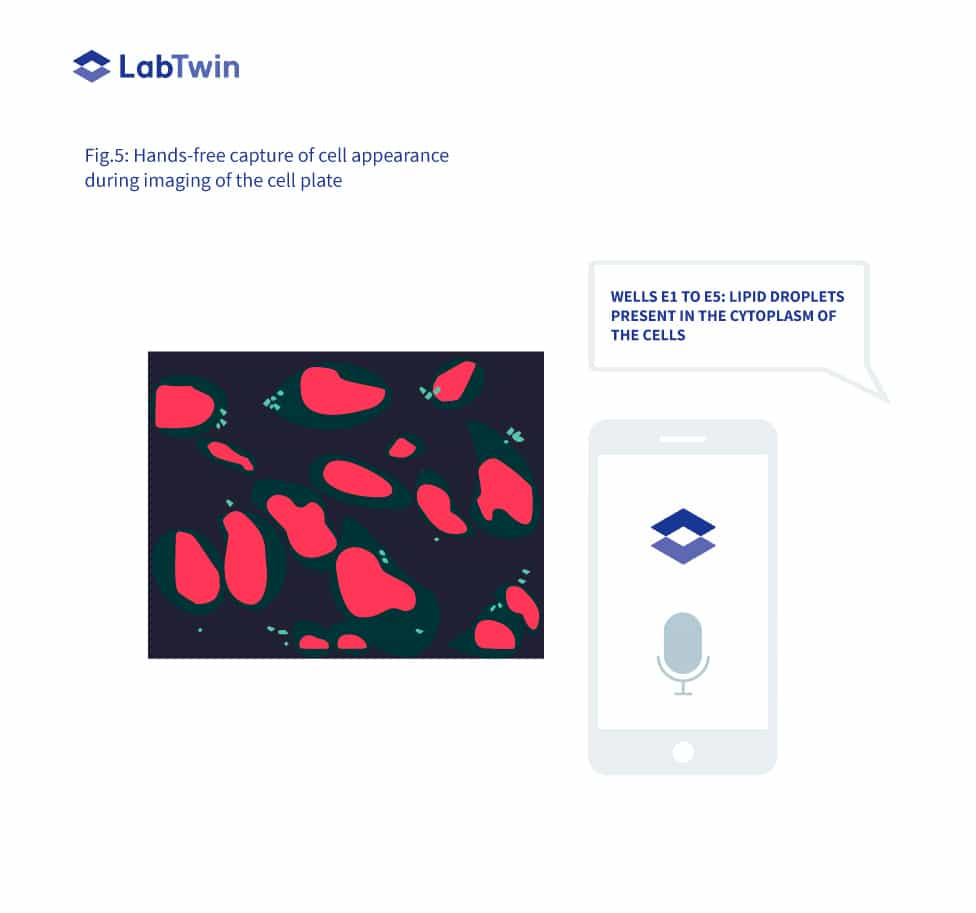
5. DNA EXTRACTION AND QUANTIFICATION
Scientists can also assess the effect of a drug candidate on cultured cells by directly quantifying mRNA expression through qRT-PCR. The choice of commercial kit as well as the choice of protocol parameters depends on the type of cells being analyzed. Scientists need to record all these parameters, together with any protocol deviations, in order to be able to repeat or improve their experiment.
Scientists report saving time, avoiding confusion and lowering error rates by using LabTwin to read out protocols and set multiple labelled timers in parallel.
LabTwin’s digital assistant can walk scientists through a protocol step-by-step using verbal instructions, for example dictating incubation time and temperature, compound concentrations, etc. During an experiment, scientists can also use LabTwin to collect all their observations, protocol deviations and ideas on how to improve the next experiment. The digital assistant automatically transcribes and digitizes all these data, allowing better troubleshooting and experiment reproducibility.
LabTwin’s digital lab assistant includes integrated timers and reminders to help scientists stay on track and optimize their time when running several tests in parallel.
“When I noticed that several of my tubes had a
slightly lower volume than the others, I could
record it in LabTwin directly.”
LabTwin User - Scientist, Top 10 Pharma Company

6. ANALYSIS AND REPORTING
Each workflow ends up with scientists analyzing results and preparing reports. To do this, scientists often need to collect notes from different sources, transcribe them from manual to digital format and then upload them to either store or share with colleagues.
Scientists report that using LabTwin helps them save time and energy, and produce better quality reports.
With LabTwin, scientists can take voice notes at the bench and have these automatically transcribed while they work. Then when researchers finish their experiments, they can quickly source all relevant notes in the LabTwin Web Platform using the label they chose for a particular experiment. The selected notes can be gathered in a report and directly be uploaded to a legacy ELN or to a cloud database.
“Before LabTwin, it took me two days to collect
the information of my last experiment spread over
weeks and several instruments.”
LabTwin User - Scientist, Top 10 Pharma Company
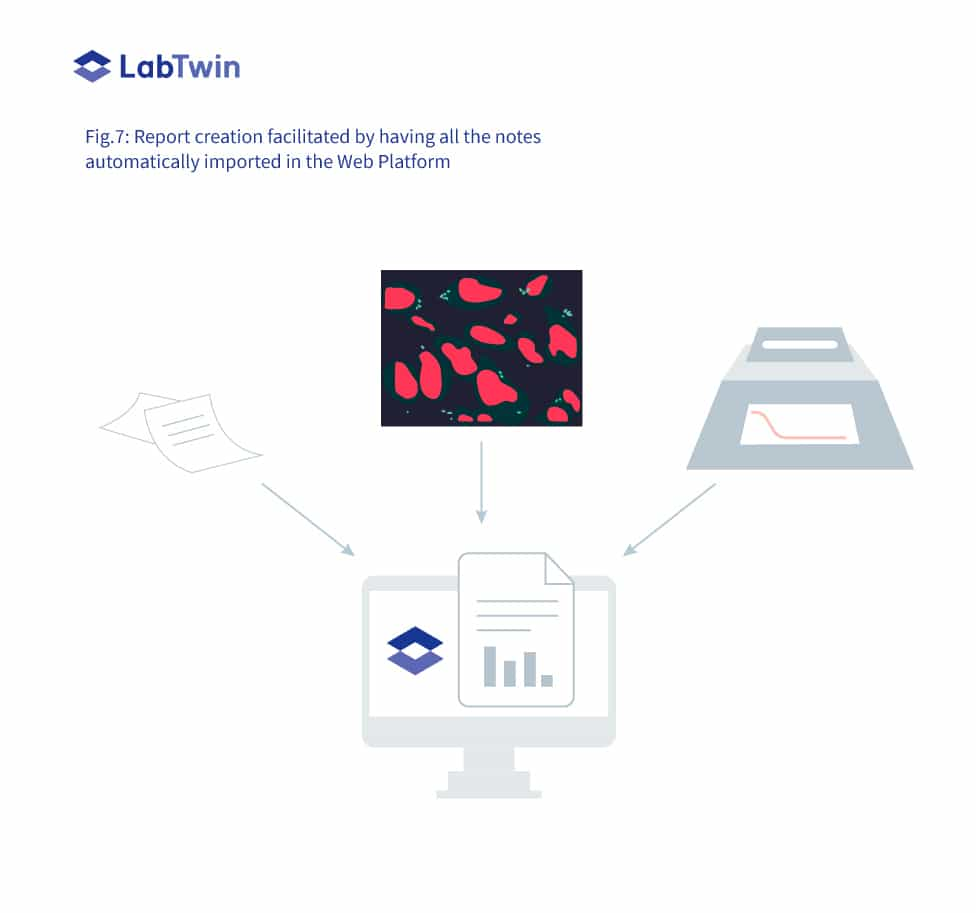
CONCLUSION
Working under sterile conditions represents the main challenge of the cell culture workflow. Handsfree documentation appears as the best solution to enable real-time documentation while preventing contamination risks. 80% of LabTwin users report that their focus increased. Moreover, enabling a more precise documentation results in an increase of reproducibility by 50%.

